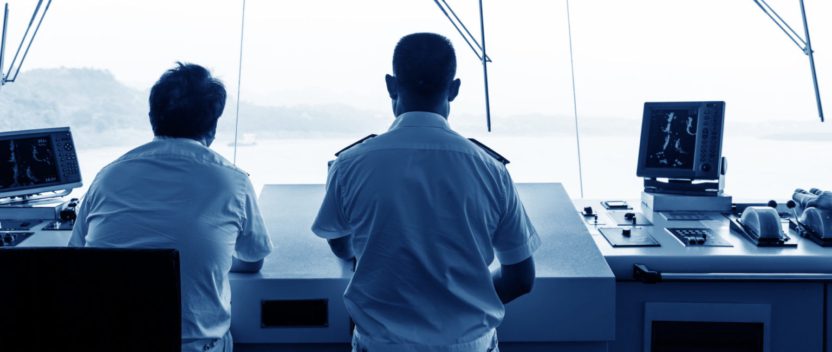Too much data? Try some better information
Ecosystem is a word with a number of interpretations but in its digital sense is defined by Wikipedia as ‘a distributed, adaptive, open socio-technical system, with properties of self-organisation and scalability’. It’s the kind of digital future to which shipping these days readily aspires, at least from the point of view of technology vendors.
Pole Star is something of a veteran at the ecosystem principle, having been among the innovators in vessel tracking and how to combine this with navigation, risk and compliance data.
But as Chief Technology and Marketing Officer Peter Davies explains, the result of this kind of approach, at least until recently has been to increase the amount of data available rather than enable owners to see the information they need with clarity.
This is changing, not least because of the growth in cloud computing capacity but also because unless they can ‘de-clutter’ and interpret data, they will not pay for themselves.
Pole Star has spent the last 18 months preparing for what Davies believes is going to be a revolution over the next three years in the way the company designs and builds applications so that they deliver real value for ship owners and the shipping community.
As so often, the real question he says is “what do we really mean by big data? I think the point is that you want to be able to integrate more new and different data sources to drive extra value in the decision-making process”.
Many shipowners still tend to favour gut decisions over data-driven ones but the plan is to deliver ‘data plus context’ to provide genuine insight, building information from a number of different sources in order to derive better value and insight.
This could take the form of SOx (Sulphur oxides) and NOx (Nitrogen oxides) emissions monitoring that adapts to the ship’s position in and out of ECAs (Emission Control Areas) and will deliver a warning if it exceeds permitted maximums. Add in the lower hanging fruit such as fuel consumption data and you have a basic environmental profile of any vessel.
For finance sector customers, Pole Star uses its PurpleTRAC software to integrate existing data sources to provide a sanctions compliance check, turning what used to be hours of manual checking into less than 30 seconds response.
“We make that look really easy for the people who use the system today because basically they can screen a vessel and they get back information about whether or not the vessel has a problem or whether it’s good,” he explains.
“Behind the scenes we’re actually doing a whole bunch of things at different times; ship details from IHS, port state control records, screening against a comprehensive set of sanctions and delivering that back in normally between 20 and 30 seconds.”
The other big change driving the strategy is the adoption of an open API, (Application Programming Interface) a recognition he says that “it doesn’t matter how clever you are or how many programmers you use, you can’t possibly meet all the different challenges that different organisations have. What we want to do is give them the ability to pull some of this stuff together for themselves”.
Davies says there is still a group of people who want to look at dots on maps but for most this will be insufficient in future. “Our rationale was why don’t we just make it available to our customers so that the data they’ve already bought and paid for they can use in more interesting and more useful ways?”
This meant adopting the Jeff Bezos creed that all Amazon teams would use an API to expose their work, allowing others to access and potentially influence it. An uncomfortable process, but one with the aim of making products ‘strong and robust and secure enough to be used on the outside,’ Davies says.
“Everything that we do has to sit behind an API so that we can actually start to build what we call the Universal Maritime Ecosystem. But the rationale is that we can’t do it all ourselves, we can’t keep up with the range of different applications that people want to do but we do have something to bring to the table.”
Achieving the ecosystem tag means scalability and self-organisation. With weather data every six hours, AIS positions every 15 to 30 seconds, some information daily and some only as it happens, the system is designed around schedules and services that can manage the randomness, built on a platform of hardware independence.
Making this robust enough for shipping has meant utilising a secure Amazon-based web services platform, separating services into clusters and load balancing so that in case of a catastrophic failure, the entire platform can be brought back up ‘in about 25 minutes’.
The challenge to the industry it seems, is to think of ways of bringing innovation to the table, either with the applications they already provide or by finding ways of tweaking the existing data into new products. Davies for his part says Pole Star is looking for industry partners as well as for customers to make use of the platform.
“We already invest in creating a proprietary weather map and format. We maintain it today and it’s a critical piece for our customers because we also add shipping positions to it,” he says. “Because we’ve done that, we could make that available to other people and they might find some innovative and useful ways to grab route positions or particular weather at particular times and create something completely new.”
Other applications could see Pole Star aggregate and anonymize its own or third party content and make it available for ‘some interesting data analytics’ which could be integrated into its own and other people’s products.
The reasoning seems simple. The weight of regulatory compliance and the need for operational efficiency are combining to create a deluge of data. What has been lacking so far is a means to combine data feeds in a disruptive or truly innovative way.
This could be akin to a garage mentality: to find out how something works, you might have to break it, but you might end up building something better. As Davies notes, “there’s still not a lot of money around and so what you want to have is smarter, better systems that alert you when things go wrong or even right”.
Ends


